Ever feel like you’re in a speed-dating event with your AI language model, trying to get quality content but it’s spitting out some less-than-ideal matches?
The thing is, it’s not all the AI’s fault. The way we interact with language models, like the mighty ChatGPT, can significantly impact the quality and relevance of the output.
Nowadays, users are jumping into ChatGPT’s arms like it’s the last lifeboat on the Titanic.
We rely on default capabilities, forgetting that crafting thoughtful prompts is like writing love letters to our AI soulmate.
Enter: The After-Before Prompting Method.
It’s the Cupid’s arrow that revolutionizes the way we interact with language models.
With it, you’ll get more accurate and tailored results that meet your specific needs, making the AI-generated content feel like a perfect match!
In this post, we’ll play matchmaker as we explore:
- The magic of the After-Before prompting method
- Its irresistible advantages and applications
- Best practices for wooing your ChatGPT sweetheart
By mastering this technique, you can transform your experience with ChatGPT and elevate the quality of AI-generated content, turning your AI speed-dating event into a lasting relationship.
Ready to find your AI soulmate? Let’s dive in!
Context is King 👑
When GPT-3 burst onto the scene, it blew our minds with human-like text, all thanks to the few-shot prompting method. Users had to provide examples or prompts, guiding the AI towards their desired output.
But then, InstructGPT and ChatGPT came along, making the AI experience smoother than a smoothie.
These advancements have undeniably made our lives easier, but there’s a catch.
Some users started treating their AI models like an unloved potted plant, neglecting the art of crafting thoughtful prompts.
This slip-up can lead to AI-generated content that’s less appetizing than a gas station sandwich.
To avoid this, we need to embrace the power of context! By providing clear, concise, and relevant context, users can help the AI understand their needs and, in turn, improve the quality of generated content.
Fun fact: GPT-3 veterans are often better at squeezing the most out of GPT-4.
Why?
Their experience with GPT-3’s demanding prompts has trained them like prompt-writing ninjas! 🥷
It just goes to show that practicing the art of prompting pays off.
Remember the mantra: “Garbage in, garbage out.”
If you feed your AI a poorly-crafted prompt, it’ll spit out content that’s about as helpful as a chocolate teapot. But give it a well-crafted, context-rich prompt, and you’re golden!
So, in the land of ChatGPT and other language models, context reigns supreme. Master the art of prompting, and you’ll unlock the full potential of your AI partner-in-crime.
The “After-Before Prompting Method” Unveiled
Picture the After-Before prompting method as a time-travel adventure with your AI language model buddy, like ChatGPT.
Instead of the traditional way, where users ask a question and waiting for the AI to answer, this method flips the script (literally).
You provide the future desired result, and then let the AI hop in its DeLorean, reverse-engineer the process, and figure out how to achieve that outcome.
To make the most of this time-bending technique, you’ll want to team up with GPT-4. Its advanced capabilities allow it to understand complex instructions and context, making it the perfect partner for this method.
With its enhanced understanding, the AI can effectively process the end result and work backward to achieve it.
One of the key superpowers of the After-Before method is its ability to generate more accurate and tailored outputs.
By giving the AI a clear goal (think: bullseye on a dartboard), users can guide it more precisely towards the desired result.
This method lets you have better control over the generated content, ensuring the output aligns with your master plan.
When comparing the After-Before method to traditional prompting techniques, we can spot some game-changing differences.
Old-school methods often leave AI to its own devices (and imagination), sometimes leading to ambiguity or misinterpretation (cue awkward robot misunderstanding).
The After-Before approach, however, takes ambiguity out of the equation by setting a clear target for the AI to aim for.
This unique aspect of the After-Before method sets it apart from traditional techniques, giving users a secret weapon for unleashing the full potential of AI-generated content. 🏹
Case Study 1: Channel Your Inner Shakespeare (or any other writer)
In this case study, we’ll dive into how the After-Before prompting method can transform your AI into a writing style chameleon, emulating a specific author’s style more effectively than traditional techniques.
First things first, you’ll need to gather a hefty sample of the target writing style (between 1000-1500 words, ideally). But beware, ChatGPT’s message length limitations mean you may need to slice it into bite-sized pieces or trim it down to fit within the character limit.
When you’re ready, use a divider (=====) to separate the provided example from your instructions. This helps the AI grasp the context and process the instruction like a pro.
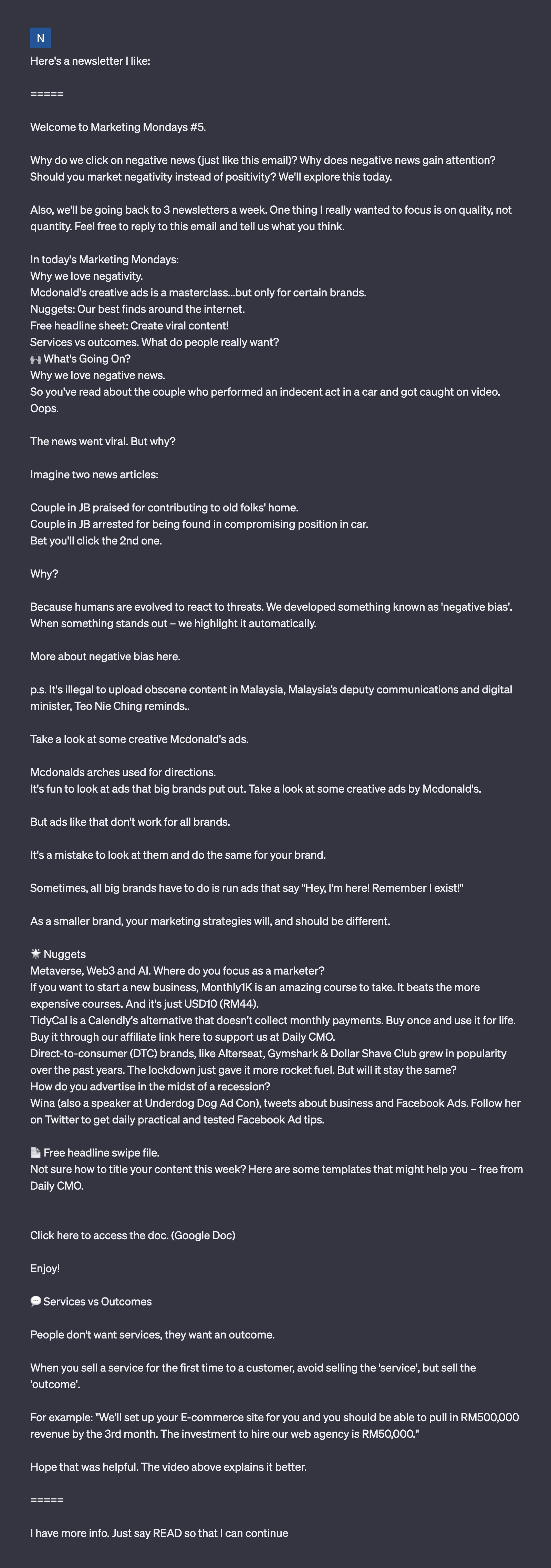
Just a quick heads-up for using ChatGPT: The ending phrase I have more info. Just say READ so that I can continue is like a secret handshake to bypass that pesky word limitation in a single message. 🤫
It’s like a cheat code in a video game, but for ChatGPT.
It lets you sneak in some extra instructions and helps you get the most out of your AI-powered conversations.
So, whenever you need to prolong the instructions, just use this ending phrase. That way, you’ll prompt the AI to reply with just “READ,” allowing you to continue giving it more instructions and ensuring you get the best possible assistance. 🤖

Next, toss in a clear sample of your own writing that you want the AI to rewrite in the target style. Don’t forget to use the divider (=====) to separate the content from the instruction, so the AI can stay focused on the mission.

Once you’ve got your final output in hand, it’s time to put on your detective hat and analyze how well the After-Before prompting method channeled the desired writing style.
Compare the original and rewritten content to see if the AI nailed the emulation game.
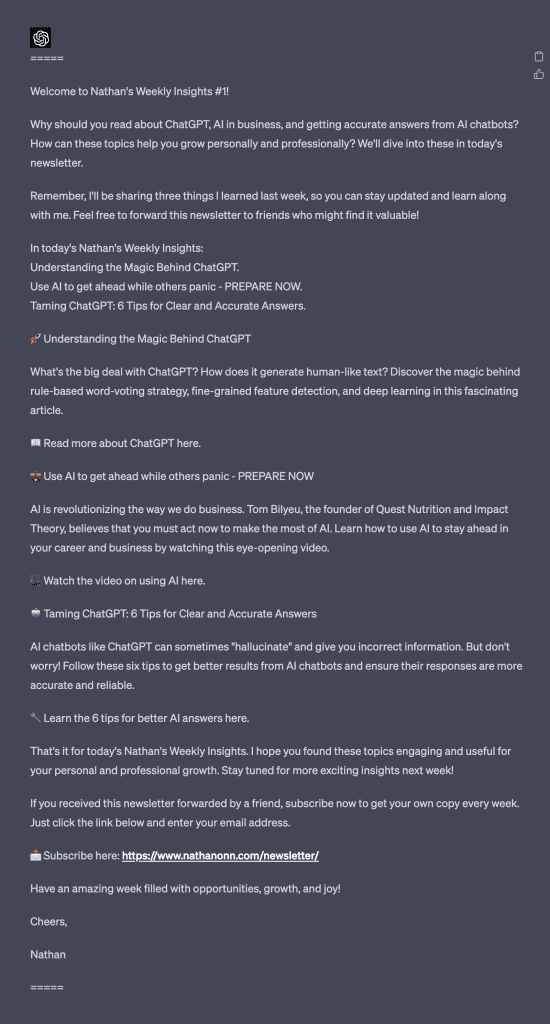
The After-Before prompting method shows off its prowess in accurately mimicking a specific writing style, putting traditional methods to shame.
By providing a clear end goal and guiding the AI with context and instructions, users can achieve higher-quality outputs that are the spitting image of their desired writing style.
This method is as simple as it is effective.
However, In some cases, you might want to toss a few extra instructions to the AI on how to reverse-engineer the process like a mastermind.
So, let’s dive into another exciting case study that’ll make you fall in love with the After-Before prompting method even more! 🚀
Case Study 2: Using AI as Your Sidekick for Evaluating and Boosting Student Code Submissions 🦸🤖
This case study exists to help coding instructors tackle the challenges of checking and providing feedback on student assignments, all with the power of AI on their side!
The idea is to use GPT-4 as an automated teaching assistant to streamline the process and enhance the quality of feedback provided to students. (it’s like having a clone, but without the whole sci-fi horror movie outcome.)
To establish the AI’s role and provide instructions, we employ role-based prompts that specify the AI’s function as a teaching assistant.
These prompts offer several benefits, such as providing context for the AI and guiding it towards the desired output.
Clear and comprehensive instructions are essential to ensure the AI understands its role and the task at hand. It’s like teaching a robot to dance – start with the basics!
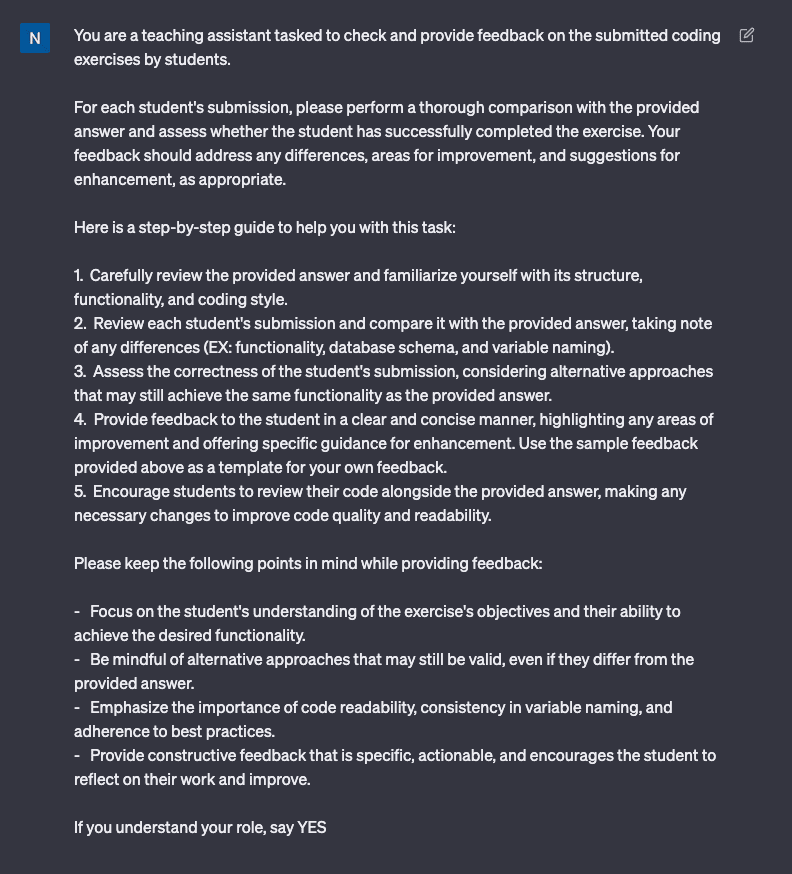
Next, provide the correct answer for the assignment or exercise. This serves as a reference for the AI, allowing it to understand the problem and evaluate the student’s submission accurately.
It’s like giving the AI its very own cheat sheet!

Present the student’s submission and instruct ChatGPT to evaluate it based on the provided instructions. This will prompt the AI to assess the student’s work and offer feedback accordingly.
The AI is now ready to put on its judgmental hat.

After receiving ChatGPT’s feedback and evaluation, analyze its effectiveness. The AI-generated feedback should be precise, relevant, and constructive.
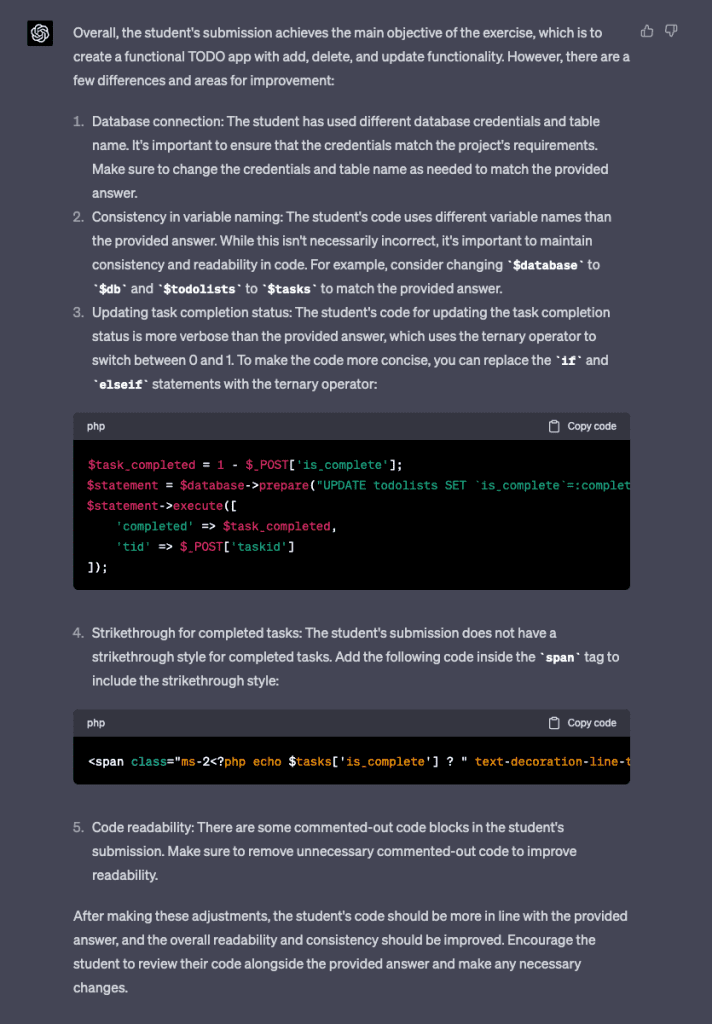
This highlights the success of the After-Before prompting method in facilitating AI-assisted evaluations. Hooray for helpful robots!
Reflecting on the benefits and potential applications of the After-Before prompting method, it’s evident that employing AI as a teaching assistant can save time and increase efficiency for instructors.
No more late-night grading marathons!
The method opens up possibilities for AI-generated feedback and evaluations in various educational settings, enabling educators to focus on more personalized guidance and enhancing the overall learning experience for students.
It’s like having a magical AI sidekick – helping both teachers and students soar to new heights! 🚀
Tips and Best Practices
To get the best possible results, here’s what you should do:
- Be clear and specific: Think of ChatGPT as your slightly confused friend. Give it detailed instructions and context to avoid any “huh?” moments. The clearer you are, the better the output will be!
- Experiment with different approaches: Feel free to play around with your prompts like a mad scientist. 🧪 A tiny change in wording or context can turn your AI-generated text into a masterpiece!
- Utilize role-based prompts: Make ChatGPT your obedient servant by assigning it a specific role. This helps align its responses with your desired outcomes, like a well-trained AI butler.
- Break complex tasks into smaller steps: Got an intricate task? Divide and conquer! Break it into smaller, bite-sized parts that are easier for ChatGPT to digest.
- Keep track of successes and failures: Take notes like a detective 🕵️♂️ to figure out what works and what doesn’t. This way, you’ll refine your prompting strategies and unlock the true power of ChatGPT.
But wait, there’s more! Here are some tips to overcome the limitations and challenges of the After-Before method:
- Be mindful of ChatGPT’s knowledge limitations: Keep in mind that ChatGPT’s knowledge cuts off at September 2021. It’s like an amnesiac time traveler, unaware of recent developments and trends.
- Manage expectations: GPT-4 is advanced, but it’s not a mind reader. Don’t expect human-like understanding, and you won’t be disappointed. Embrace the trial and error process!
- Be patient and persistent: Like learning to dance the tango, working with AI takes time and practice. Keep refining your prompts and learning from the AI’s responses to achieve the best possible outcome.
By following these tips and best practices, you’ll become a ChatGPT whisperer, mastering the After-Before prompting method and overcoming potential challenges! 🚀
In Conclusion: After-Before Method Magic ✨
By now, I hope you realized that this is a magical, innovative approach to working with ChatGPT that’ll have you dancing 💃 the night away with AI-generated content you’ll actually like.
The After-Before Prompting Method transforms the way users interact with AI by:
- Providing crystal-clear context 🏔️,
- Crafting thoughtful prompts 🧠, and
- Utilizing the unique, mind-blowing capabilities of GPT-4 🤯.
Through the case studies we showed off in this post, we’ve demonstrated the effectiveness of this method in dazzlingly diverse scenarios, such as:
- Emulating a specific writing style as if you’re channeling the spirit of Hemingway himself 🖋️,
- Serving as a teaching assistant for evaluating and enhancing student code submissions without the need for bribes or flattery 💻.
By following the tips and best practices we dished out, you can overcome potential limitations and challenges while maximizing the benefits of the After-Before prompting method.
So, buckle up and hold on tight, because the After-Before prompting method is here to revolutionize the way we generate AI-driven content, paving the way for more precise, reliable, and efficient interactions with language models.
And let’s face it, who doesn’t want to be besties with their AI assistant? 🤖💕
TL;DR: The After-Before prompting method is your ticket to AI-generated content paradise. Embrace it, and together we’ll create incredible things! 🌟
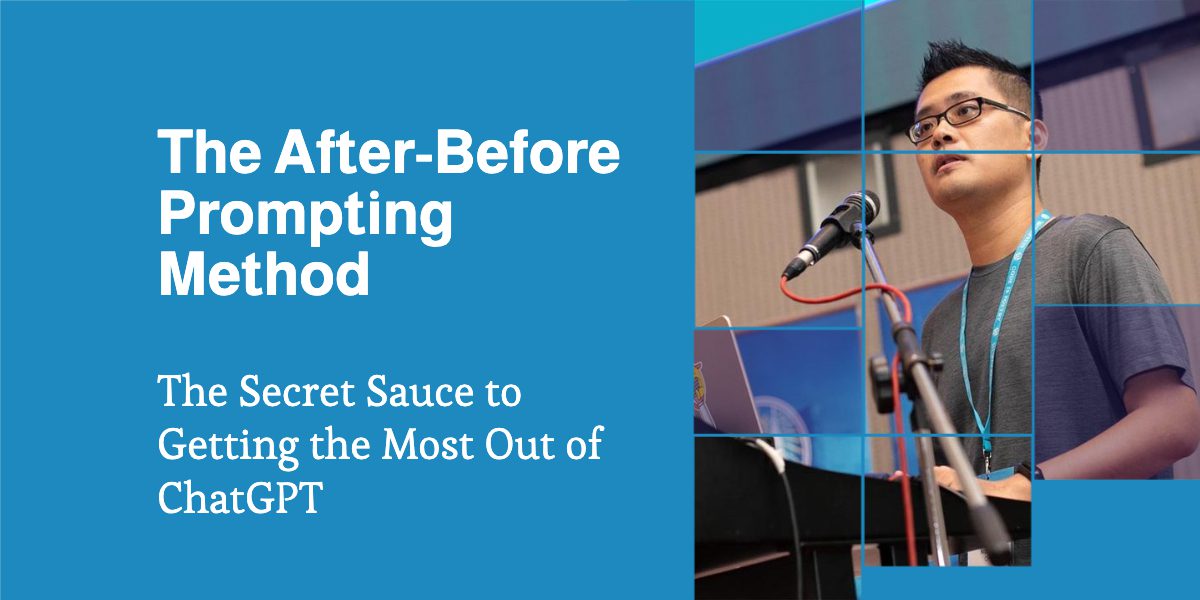




Leave a Reply